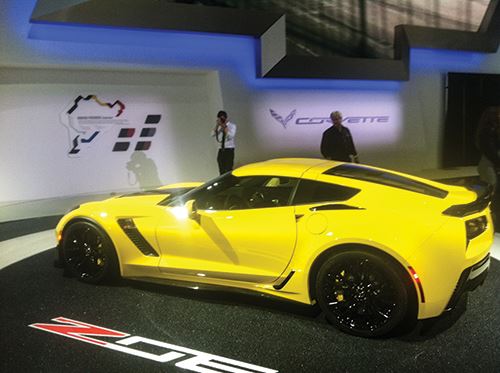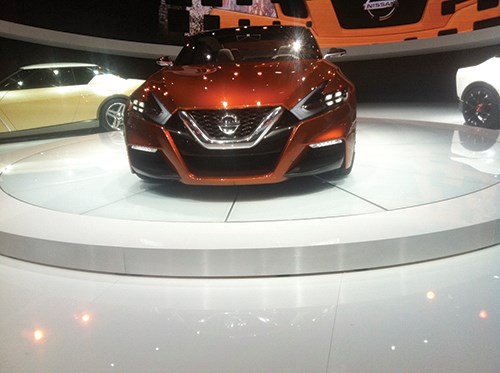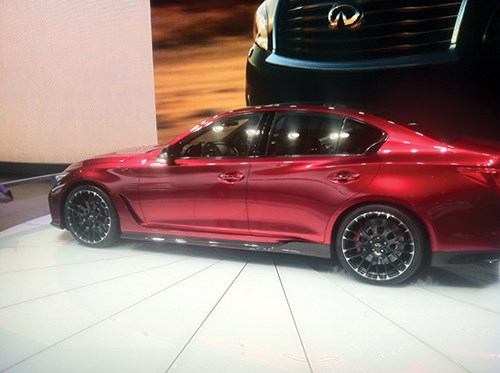2014 North American International Auto Show Review
Detroit’s annual automotive industry showcase highlights the rapid pace of innovation.
The 25th anniversary of the North American International Auto Show (NAIAS) was celebrated at the Cobo Convention Center (Detroit, Mich.) in January, giving visitors a chance to view dozens of new production vehicles, models and concept cars, as well as providing them with an up-close look at the rapidly changing face of the industry. In the quarter century since the Detroit Auto Show morphed into NAIAS, auto OEMs have introduced more than 1,300 new vehicle models here — 81 percent of them have been first-time, worldwide unveilings.
As at previous shows, technological change was in the spotlight. Most newsworthy was the rate of change: The pace of innovation in recent years has accelerated, with robust competition for markets as auto OEMs face unprecedented technical challenges. Many spring — no surprise — from the progressively stringent fuel economy/emissions standards now in force on both sides of the Atlantic. CAFE standards in the U.S., for one, will require manufacturers to achieve a fleet average of 35.5 mpg by 2016 and then hit 54.5 mpg by 2025.
Composites and other lightweight materials are expected to play integral roles in the design and manufacture of this next generation of vehicles. An already realized case in point is the much-discussed BMW i3, BMW AG’s (Munich, Germany) first fully electric vehicle, which made its North American debut at the show.
The car features a 22-kWh lithium-ion battery pack, and a passenger cell and other parts constructed of lightweight carbon fiber composites. Significant, here, is the back story: The i3 incorporates carbon fiber supplied by SGL Carbon SE (Moses Lake, Wash.), a joint venture of BMW Group and SGL Group. SGL ACF produces raw fiber from a polyacrylonitrile (PAN)-based textile fiber precursor. The Moses Lake plant now has two production lines running. Together, they are capable of producing a total of 3,000 metric tonnes (6.6 million lb) of fiber per year. The fiber is shipped to Germany where, in another SGL ACF facility in Wackersdorf Innovation Park, they are processed into fabrics. These are cut and assembled into preforms and used to mold parts in a high-pressure resin transfer molding (HP-RTM) process.
The four-door i3 is 157 inches long and 62 inches high (399 cm by 157 cm) and, powered by its 170-hp electric motor, reportedly can accelerate from 0 to 60 mph in seven seconds. Fully charged, the car’s driving range is said to be 80 to 100 miles (130 to 160 km). Sources at the show said the car’s first deliveries to U.S. customers are expected in May, and they reported the company has 11,000 confirmed orders on the books for this year.
BMW also announced that it plans to start production of its first plug-in hybrid, two-plus-two sports car, the BMW i8, in the second quarter. Like the i3, the i8 will feature a passenger cell and other parts made from carbon fiber. (Any lingering doubt in the auto industry about BMW’s commitment to manufacture carbon fiber auto parts was subsequently dispelled in mid-February, when both i3 and the i8 got significant play in BMW’s TV advertising campaign during the Sochi Winter Olympics coverage.)
The winner of the 2014 NAIAS Car of the Year Award, General Motors’ (Detroit Mich.) 2015 Chevrolet Corvette Z06, was on prominent display (see photo, p. 19), repackaged with a supercharged 6.2L V8 engine that delivers more than 625 hp. Like all the 7th generation Corvette models, the Z06 comes with a standard carbon fiber hood. Additionally, its Coupe version features removable carbon fiber roof panels. Notably, all the 7th generation models are manufactured with a substructure made from a carbon nanocomposite. The substructure connects the body panels to the chassis. The carbon nanofilled composite components reportedly save about 9 lb/4 kg compared to previous versions molded from sheet molding compound (SMC).
New to the Z06 is a carbon fiber torque tube, which connects the engine to the rear-mounted transaxle. The car also comes with an optional carbon fiber aerodynamic package, which includes a front splitter with winglets, rocker panels and a larger rear spoiler. The Z06 package also includes carbon-ceramic composite brake rotors.
In 2012, Chrysler Group’s (Auburn Hill, Mich.) SRT (Street and Racing Technology) brand issued a completely redesigned version of its SRT Viper. All standard SRT models come equipped with a hood, roof and liftgate molded from carbon fiber prepreg by Plasan Carbon Composites (Bennington, Vt.). Additionally, the windshield frame features a glass/carbon fiber SMC, facilitating, in total, a 32 percent weight savings compared to the previous, all-metal model.
SRT also launched the limited-run Viper GTS Anodized Carbon Special Edition. Its metallic matte exterior color (see photo, p. 19) accentuates the vehicle’s styling, according to SRT officials. “The Viper’s unique, hand-built and hand-painted process allow us to create these ultra-exclusive special series builds,” said Ralph Gilles, president and CEO of Chrysler’s SRT Brand and Motorsports group. The car’s interior features carbon fiber accents throughout, in the center stack, door panels, steering wheel and dashboard. The company plans to build about 50 Special Edition Vipers in 2014. SRT also revealed a new “Stryker Green” color for the Viper at the show.
Nissan Motor Co. (Yokohama, Japan) displayed a number of concept sports cars intended to capitalize on innovative trends in product design and development yet also appeal to more youthful customers. The company’s Sport Sedan Concept car (p. 20) made its world debut in Detroit, with multiple carbon fiber accent components in the front fender and headlamp, as well as carbon fiber rocker panels and a ground-effects package.
Nissan’s luxury brand, Infiniti, introduced the Q50 Eau Rouge concept, a heavily modified version of its production Q50, envisioned as the company’s entry into the performance-car market segment. Although it’s labeled as a concept car, Infiniti president Johan de Nysschen “absolutely insists” that it will be put into production, perhaps as early as the 2016 model year. The vehicle, built around either a V-8 or a turbocharged V-6 capable of generating more than 500 hp, would be on par with performance cars produced by BMW, Audi (Ingolstadt, Germany) and Mercedes-Benz (Stuttgart, Germany). The car on display was built with SMC body panels, and carbon fiber exterior ground effects and interior detailing.
Related Content
Infinite Composites: Type V tanks for space, hydrogen, automotive and more
After a decade of proving its linerless, weight-saving composite tanks with NASA and more than 30 aerospace companies, this CryoSphere pioneer is scaling for growth in commercial space and sustainable transportation on Earth.
Read MoreManufacturing the MFFD thermoplastic composite fuselage
Demonstrator’s upper, lower shells and assembly prove materials and new processes for lighter, cheaper and more sustainable high-rate future aircraft.
Read MoreCombining multifunctional thermoplastic composites, additive manufacturing for next-gen airframe structures
The DOMMINIO project combines AFP with 3D printed gyroid cores, embedded SHM sensors and smart materials for induction-driven disassembly of parts at end of life.
Read MoreRecycling end-of-life composite parts: New methods, markets
From infrastructure solutions to consumer products, Polish recycler Anmet and Netherlands-based researchers are developing new methods for repurposing wind turbine blades and other composite parts.
Read MoreRead Next
“Structured air” TPS safeguards composite structures
Powered by an 85% air/15% pure polyimide aerogel, Blueshift’s novel material system protects structures during transient thermal events from -200°C to beyond 2400°C for rockets, battery boxes and more.
Read MoreAll-recycled, needle-punched nonwoven CFRP slashes carbon footprint of Formula 2 seat
Dallara and Tenowo collaborate to produce a race-ready Formula 2 seat using recycled carbon fiber, reducing CO2 emissions by 97.5% compared to virgin materials.
Read MoreVIDEO: High-volume processing for fiberglass components
Cannon Ergos, a company specializing in high-ton presses and equipment for composites fabrication and plastics processing, displayed automotive and industrial components at CAMX 2024.
Read More

























